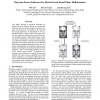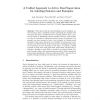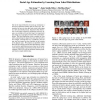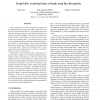11 search results - page 2 / 3 » Face hallucination through dual associative learning |
IJCAI
2007
13 years 6 months ago
2007
This paper develops a statistical inference approach, Bayesian Tensor Inference, for style transformation between photo images and sketch images of human faces. Motivated by the r...
PKDD
2010
Springer
13 years 3 months ago
2010
Springer
Abstract. When faced with the task of building accurate classifiers, active learning is often a beneficial tool for minimizing the requisite costs of human annotation. Traditional ...
AAAI
2010
13 years 6 months ago
2010
One of the main difficulties in facial age estimation is the lack of sufficient training data for many ages. Fortunately, the faces at close ages look similar since aging is a slo...
ICCV
2007
IEEE
14 years 7 months ago
2007
IEEE
Topic models have recently emerged as powerful tools for modeling topical trends in documents. Often the resulting topics are broad and generic, associating large groups of people...
ICPR
2008
IEEE
13 years 11 months ago
2008
IEEE
We present a finite element modeling based approach to compute strain patterns caused by facial deformation during expressions in videos. A sparse motion field computed through ...




